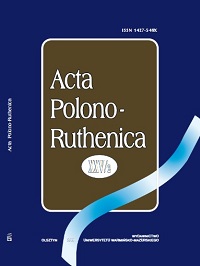Polskie inspiracje muzyczne w filmach animowanych wyprodukowanych w Związku Radzieckim – wybrane przykłady
Polish musical inspirations in animated films produced in The Soviet Union – selected examples
Author(s): Katarzyna Lidia BabulewiczSubject(s): Language and Literature Studies, Fine Arts / Performing Arts, Music, Geography, Regional studies, Visual Arts, Film / Cinema / Cinematography
Published by: Wydawnictwo Uniwersytetu Warmińsko-Mazurskiego w Olsztynie
Keywords: music in animated films; Polonaise; Nikita Bogoslóvskij; Mieczysław Weinberg; Borís Savélʹev
Summary/Abstract: Animated children’s films produced in the Soviet Union from the 1930s to the 1970s contain references to Polish music. They usually take the form of references to the polonaise, less often – to the repertoire of popular music. Recalling Polish dances by Soviet composers indicates, among others, the continuation of the tradition of using the polonaise as a court and ceremonial dance existing in Russia since the 18th century. The conclusions presented in the article were obtained through the audit analysis of soundtracks of seven selected films and their visual-narrative layer. Examples of Polish musical inspirations are discussed, taking into account the sound context of a given soundtrack as a whole. Polonaise inspirations are present in the movies with the music of: N. Bogoslóvskij (Kot v sapogah, 1938; Tri mušketera, 1938), M. Weinberg (Polkan i Šavka, 1949; Dvenadcatʹ mesâcev), B. Savélʹev (Mestʹ kota Leopolʹda, 1975). In the film Skazka skazok (1979, music by M. Meeróvič), tango The Last Sunday of J. Petersburski is cited., in episode 4 (1971) of the series Nu, pogodi! – Brass Bands from the repertoire of H. Kunicka.
Journal: Acta Polono-Ruthenica
- Issue Year: 2/2020
- Issue No: XXV
- Page Range: 77-88
- Page Count: 12
- Language: Polish

